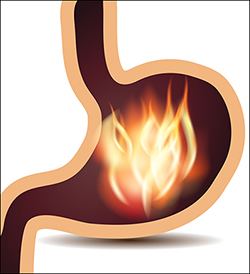METABOLISM , VITAMINES AND MINERALS
By-Dr kavita vyas (M.D.Ay.)
It is defined as biochemical changes which occur in the body in order to maintain its vital functions. Metabolism is classified in to Anabolism and Catabolism.
Anabolism - It is a constructive process. It leads to building up of fresh tissues from nutritive materials of food.
Catabolism - It is a destructive process. It leads to break down of worn out tissues and their removal. For health anabolism and catabolism should be maintained at a balance. Health is affected when this balance is upset.
Energy of the body and its sources-the body requires energy for maintaining its vital functions. In the body, energy is derived from food. Following are the sources of energy present in food.
Carbohydrates – Are fuel of body or source of energy for work and heat.
Sources- Sugar, starch, potatoes, legumes like peas and beans, corn, sugar, honey,sweet fruits.
Fats – Are energy producing oily materials. Or sources of energy for lubricating joints.
Sources- Oils, Ghee,Butter, Nuts,peanut etc
Proteins - are sources of energy for growth and repair.Usefull in bone building ,construction of cells.
Sources- Milk products, coconut, Nuts, Gram (Chana) etc
Minerals and Salts-
They have great Tissue building power.
Sources-All fruits and vegetables,specially in leafy vegetables.
Vitamins- are sources of energy for vital functions.
VITAMINS
Vitamins are essential nutrients which are required in small amounts for normal metabolism.Vitaminrs regulates metabolic process.Mostly present in all fruits and vegetables.
Classifications of Vitamins
Vitamins are classified in to :
1. Fat Soluble Vitamins -Vitamin A, D, E and K.
2. Water Soluble Vitamins -Vitamin B complex and Vitamin C.
FAT SOLUBLE VITAMINS
Vitamin A - It is an unsaturated alcohol.
Carotene is the precursor of vitamin A.
Sources - Carotenes are present in carrot, spinach and green vegetables. It is also present in dairy products like milk, butter and cheese.
Defficiency - The deficiency of Vitamin A leads to Nyctolopia (Night blindness), Xerophthalmia (Failure of tear secretion).
Vitamin D - Also known as Calciferol.
Sources - Egg, butter milk and cod liver oil.Sun light converts dehydrocholesterol of skin in to Vitamin D.
Defficiency - Defficiency of vitamin D produces rickets in children and osteomalacia in adults. These two diseases are characterized by deformities of bones.
Vitamin E - Also known as alpha tocopherol.
Sources - Soyabean oil, wheat germ oil and rice germ oil.
Defficiency - The deficiency of Vitamin E leads to Abortion and sterlity in animals, No symptom has been established in human.
Vitamin K
Sources - Spinach and other green vegetables. Bacteria present in intestine also synthesise vitamin K.
Defficiency - The deficiency of Vitamin K leads to Increased bleeding due to effective clotting mechanism.
WATER SOLUBLE VITAMINES
Vitamin B -1 (Thiamine)
Sources - Peas, beans, oatmeal, pea nuts, vegetables and fruits.
Defficiency - Defficiency of thiamin produces Beri beri (a symptom complex with characterstic neuropathy) and Wernickes encephalopathy characterized by confusion, ophthalmoplegia, nystagmus and tremors.
Vitamine B-2 (Riboflavine)
Sources - Egg, milk and vegetables.
Defficiency - Soreness of lips and redness of eyes.
Vitamin B-3 (Nicotinic Acid)
Sources - Milk, eggs, rice, potatoes and vegetables.
Defficiency - Pellegra characterized by dermatitis, diarrhea and mental confusion.
Vitamin B-6 (Pyridoxine)
Sources -Yeast, cereals, legumes, milk.
Defficiency - Irritability, abdominal distention, loss of body weight and anemia in children. In adults the deffeciency produces lesions of skin and mouth, peripheral neuritis and mental changes.
Vitamin B-8 (Pantothenic Acid)
Sources -Yeast, wheat, pea nuts, milk .
Defficiency - Keratitis, dermatitis, neuromuscular degeneration and adreno cortical insufficiency in animals. In humans the deficiency produces fatigue, malaise, nausea and flatulence.
Vitamin B-12 (Cyanocobalamine)
Sources - Egg and milk. Also present in leguminous plants in small quantity.
Defficiency - Defficiency of cyanocobalamine leads to megaloblastic anemia. Both cyanocobalamine and folic acid require for the development of blood cells.
Folic Acid
Sources - Rich in vegetarian food like cabbage, spinach and all green vegetables. Non vegetarian food contains less folic acid.
Defficiency - The deficiency of folic acid leads to defective maturation of red blood cells. This leads to megaloblastic anemia. This type of the anemia is characterized by the release of abnormally large sized red blood cells. But these RBCs have sufficient hemoglobin.
Ascorbic acid (Vitamine C)
Sources - Citrous fruits, tomatoes, potatoes and green vegetables.
Deficiency - Defficiency of ascorbic acid produces scurvy. The symptoms of scurvy are weakness, fatigue, pain in the joints and muscles. Also there is bleeding of gums and loosening of teeth.
(See related youtube video below)
.





![ACHARA RASAYAN in Ayurveda [Behavioural regimen which acts as Rejuvenation]](https://blogger.googleusercontent.com/img/b/R29vZ2xl/AVvXsEgWmm8CupFTu_vyWDtEsY9EdG8A-ZlQLOdx6lrm4qnctDJ1bli1zR7MQMebwL79XhXowikAcqIk-al0sQubhTttS6H69e3zIBK-UORc5BFH9eaWwkznPG-yWHqoQ-za1gNhVqwgwomwUiKA/w680/Screenshot_20191227-154658_YouTube.jpg)

0 Comments